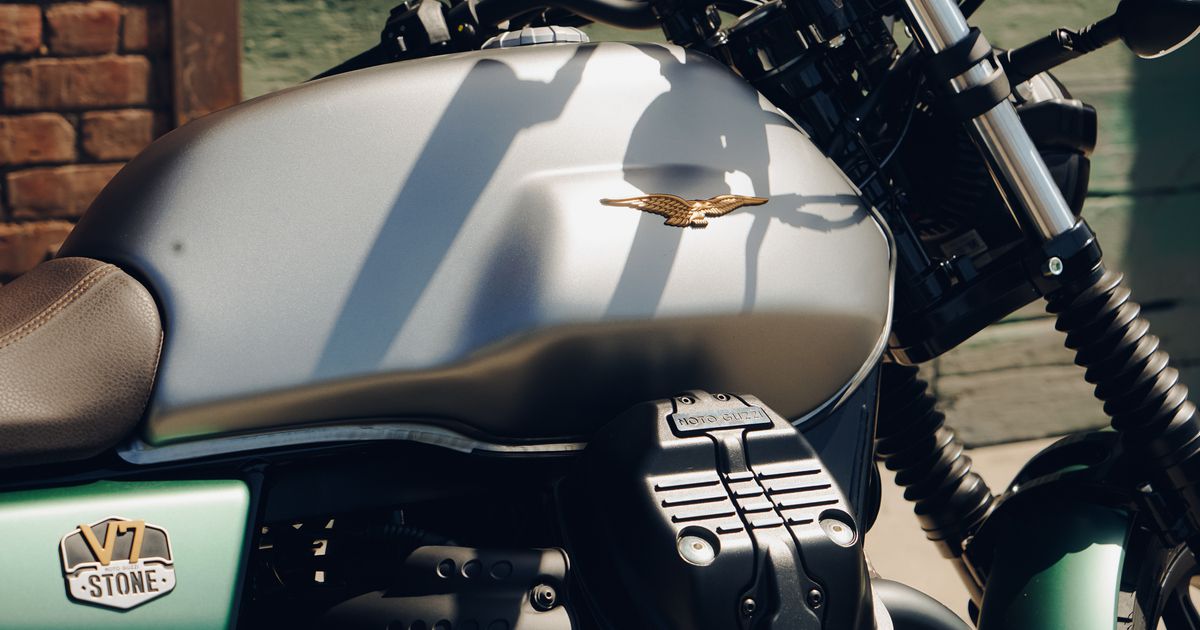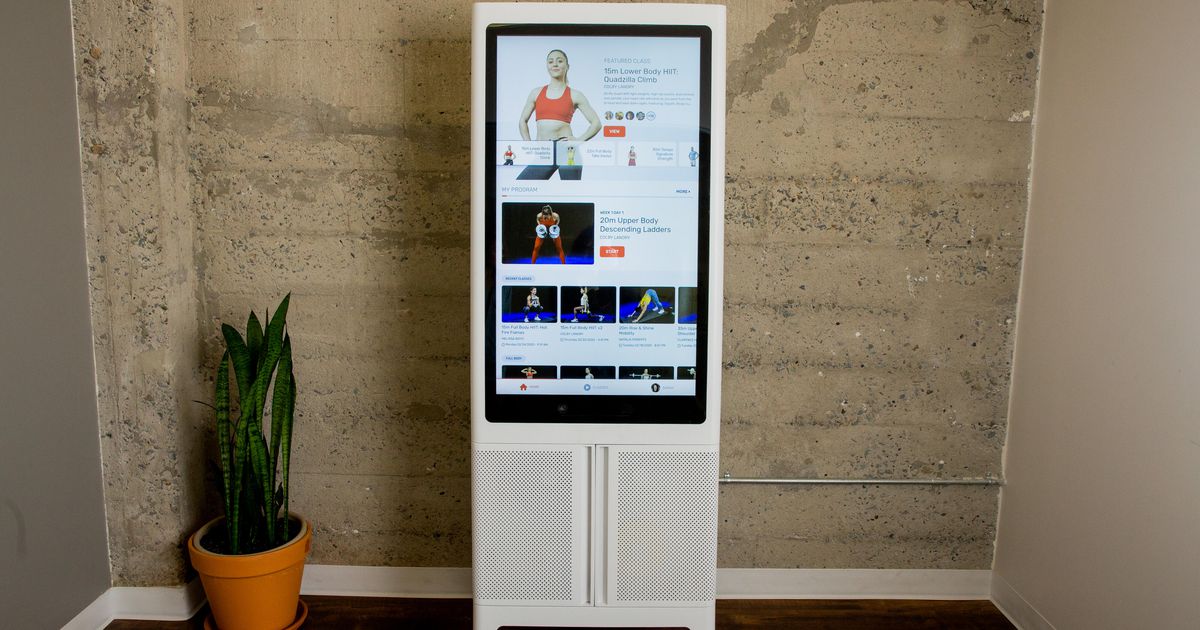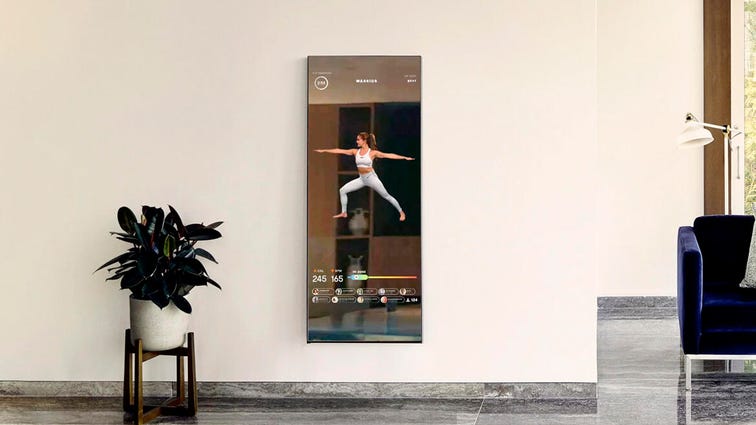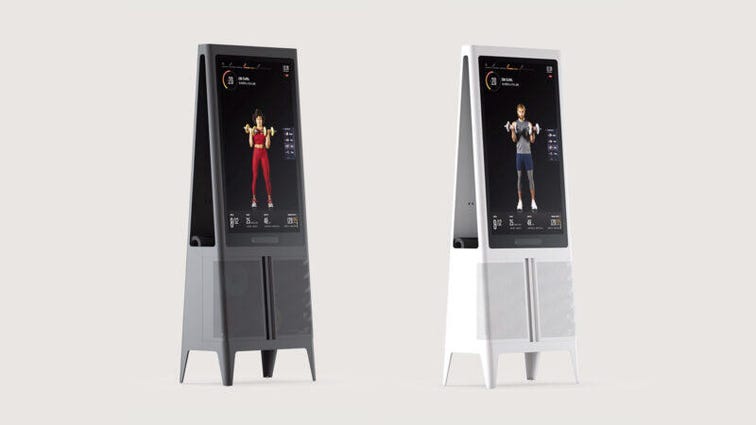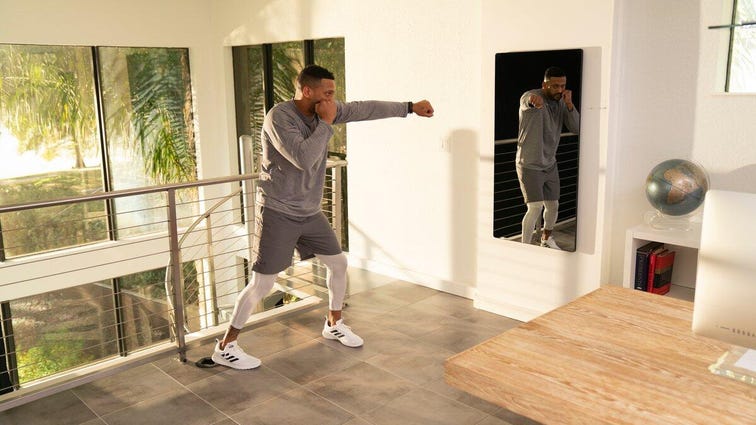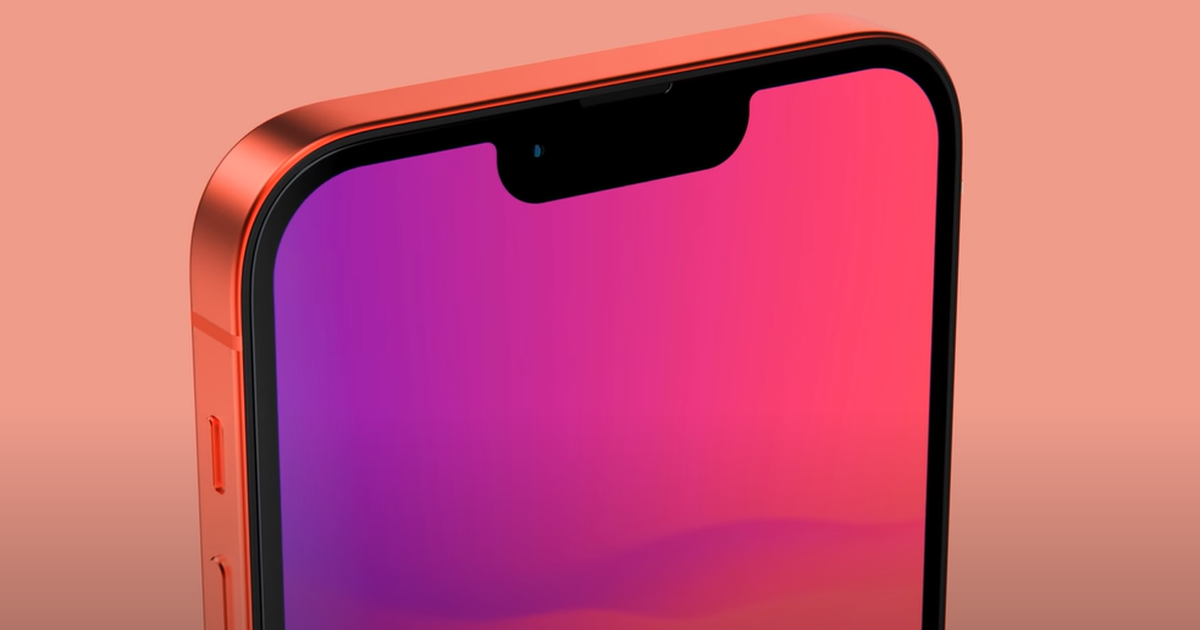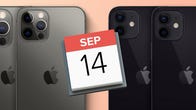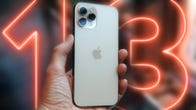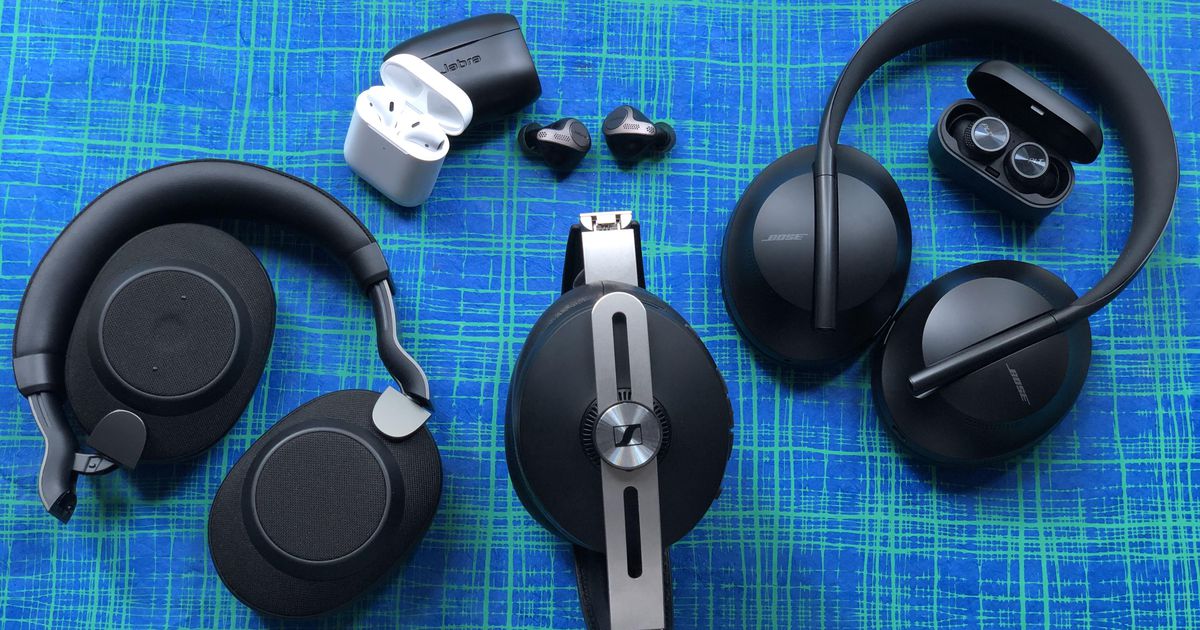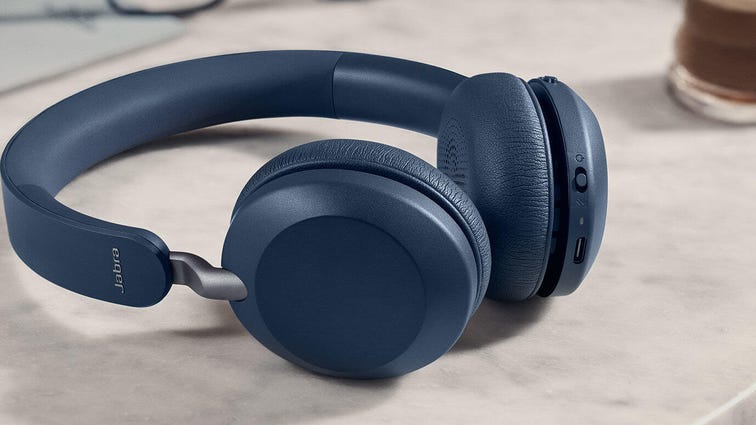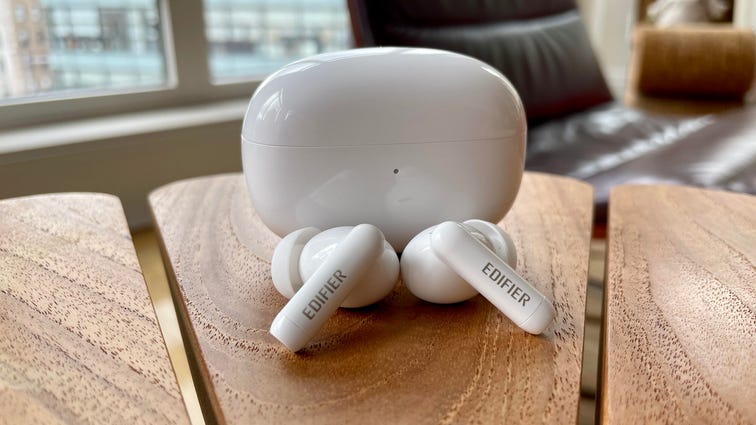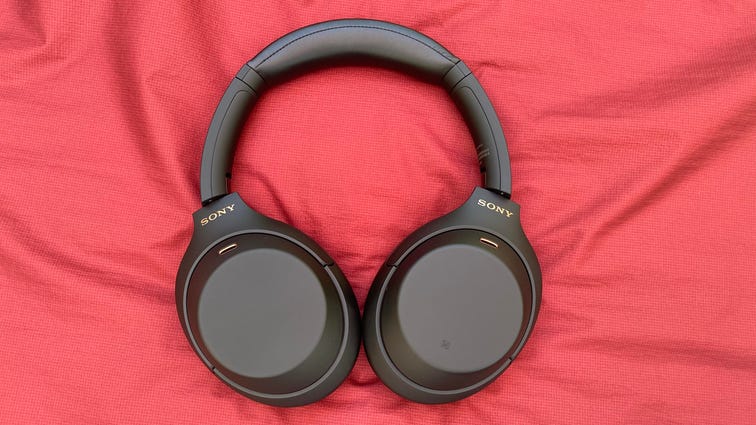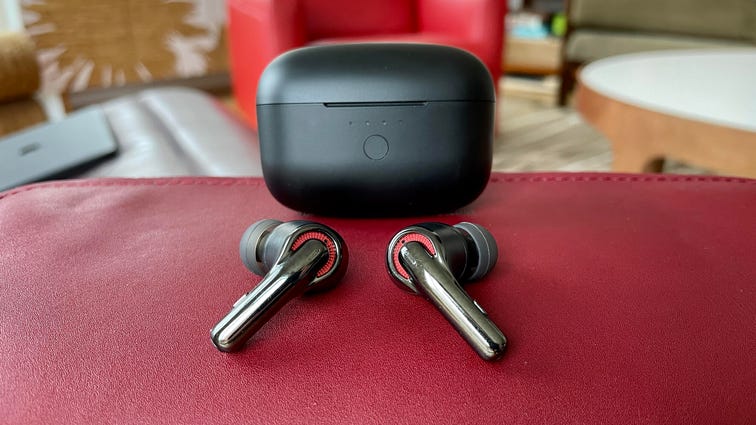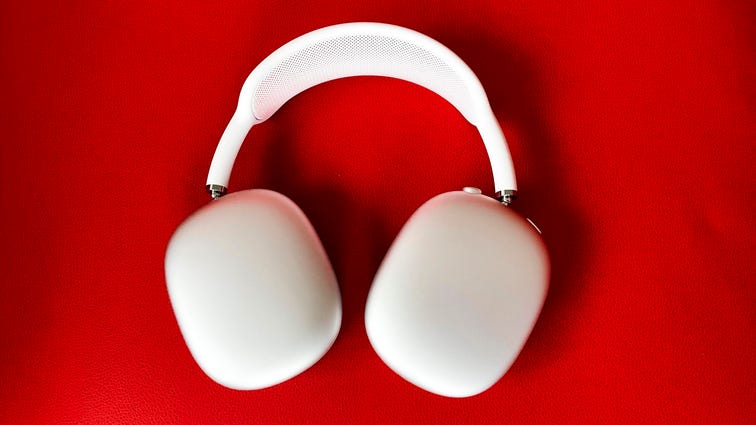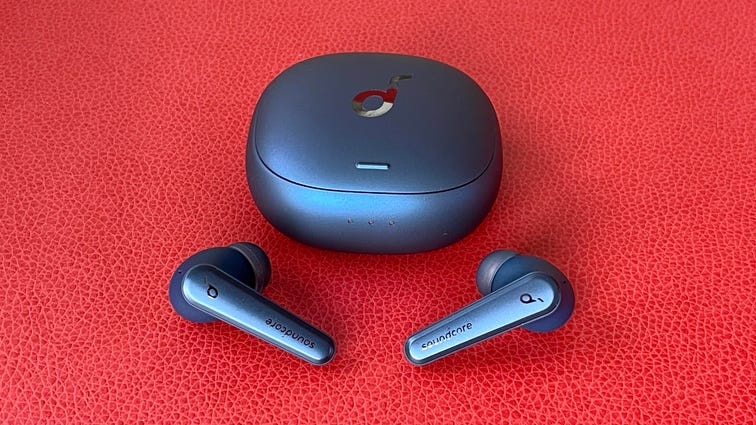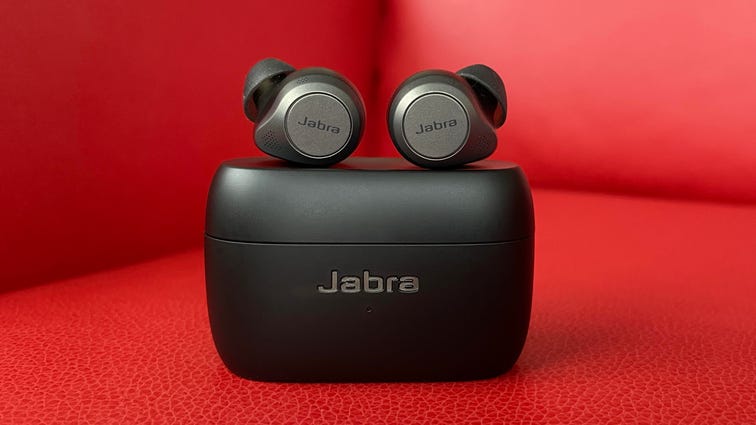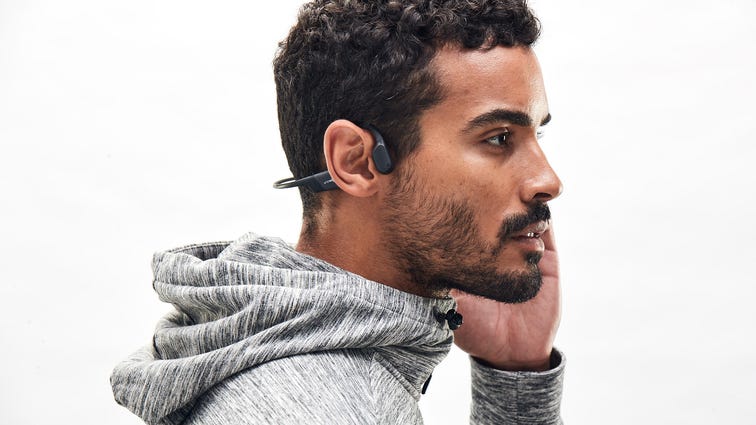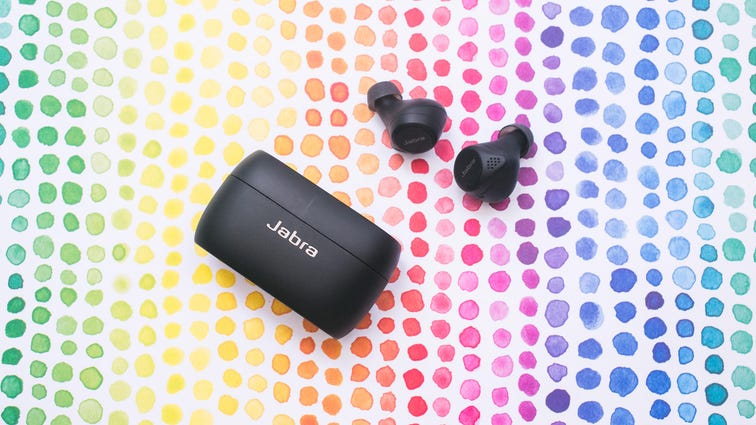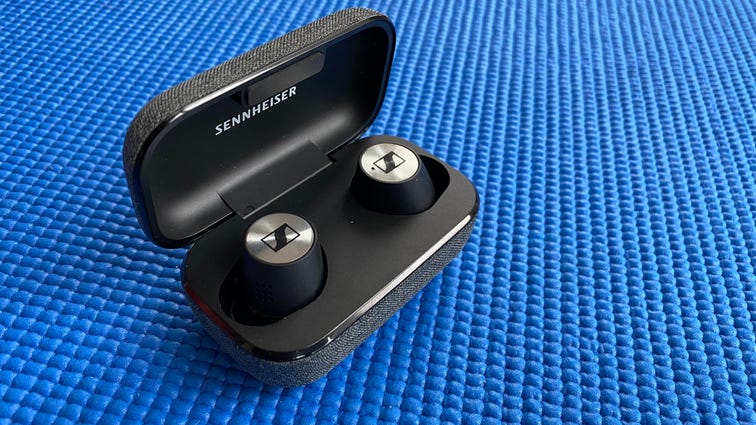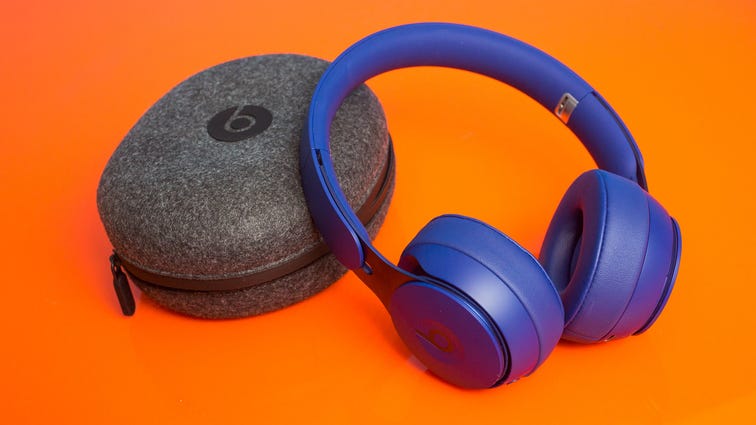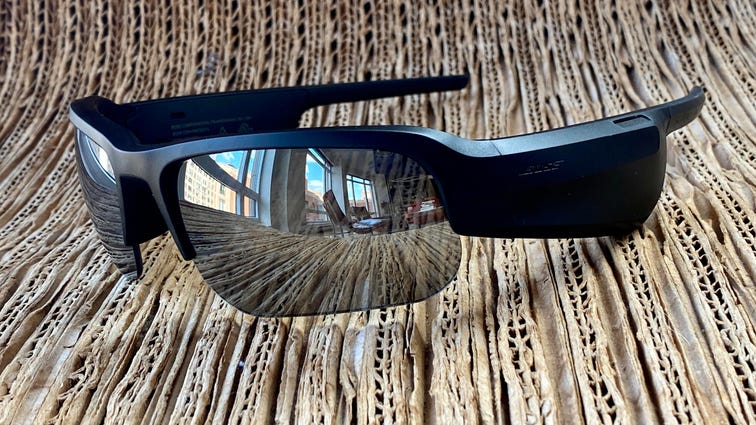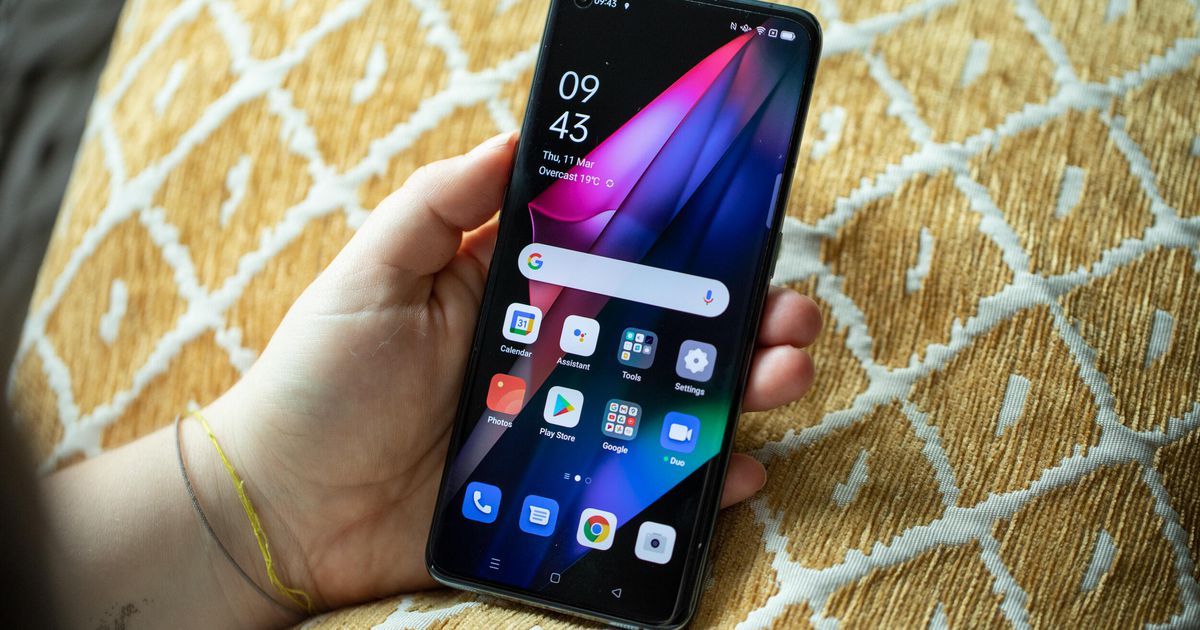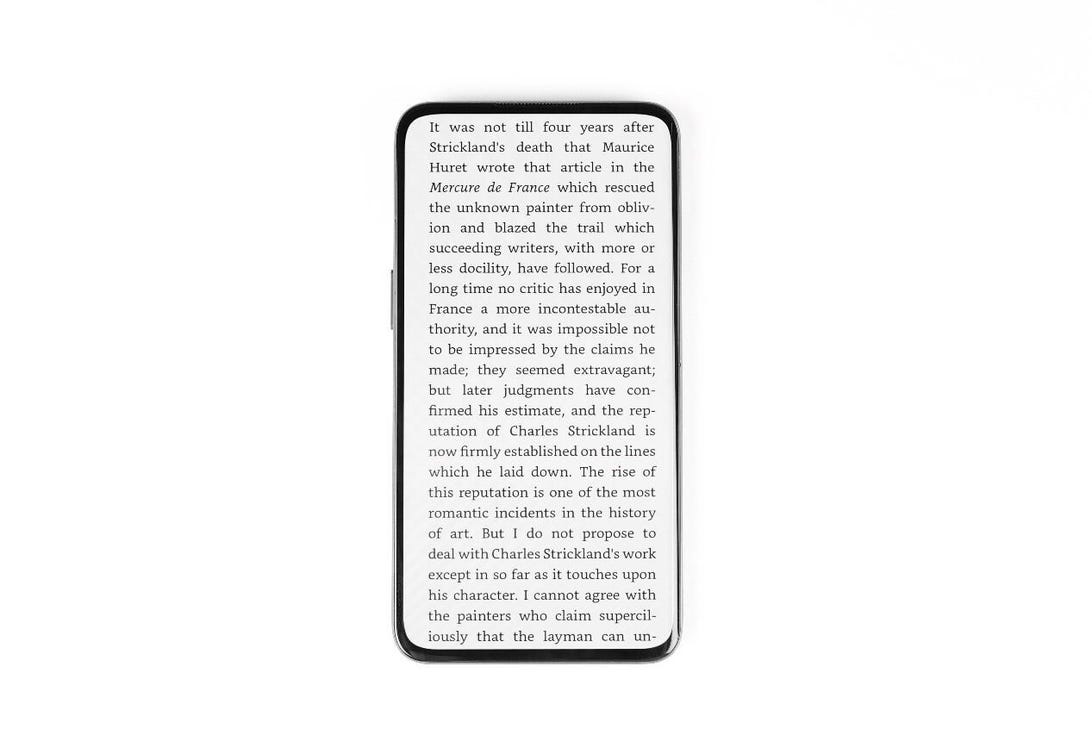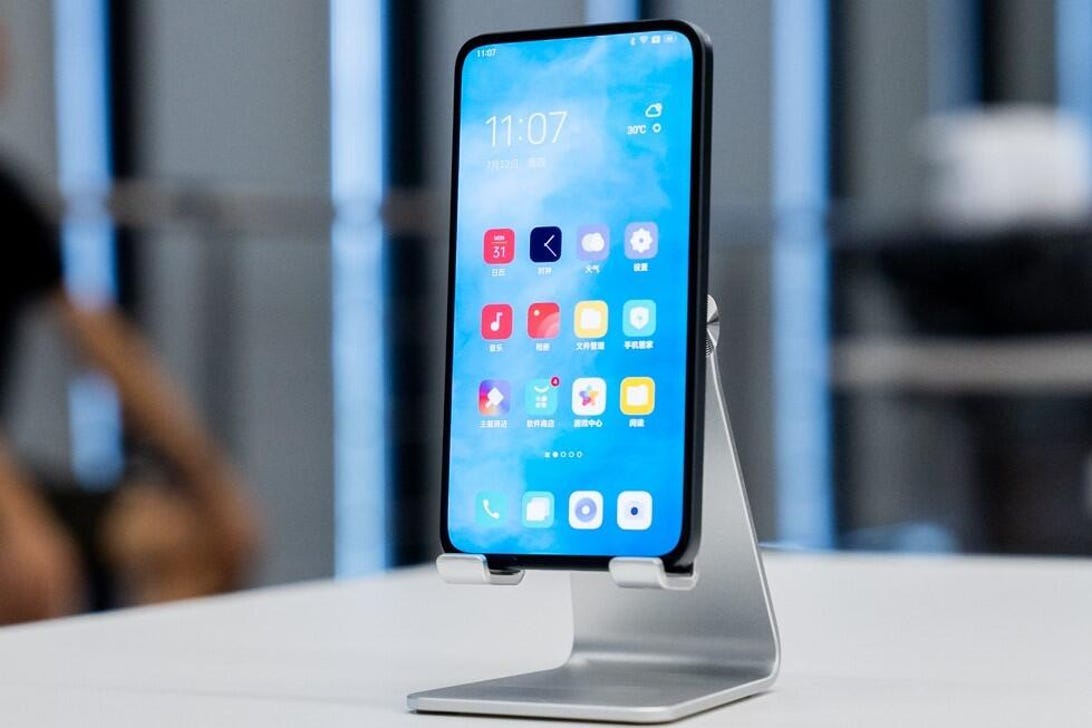Mirror, Mirror, on the wall, who’s the fittest of them all?
I’m talking about a name that’s become synonymous with fitness technology: the Mirror. Founder and former pro dancer Brynn Putnam created an entirely new category of home fitness equipment with the sleek wall-mounted home gym in 2018. In the years since, plenty of other smart home gyms have launched, and it’s no longer a lone-wolf workout mirror.
There’s the Echelon Reflect, which is essentially a different version of the Mirror. There’s the Tonal, which completely revamped the experience of at-home weight training. Then there’s the Tempo, which offers a complete fitness ecosystem all wrapped up into one trendy A-frame. And there are others still, including the Proform Vue and the newly released NordicTrack Vault.
All of these brands and products have a similar mission, which boils down to making it easier to train at home. While I appreciate the innovation and think these fitness mirrors can certainly be right for some people, I want to point out that none of them are necessary for a good workout. You definitely don’t need to spend thousands of dollars on a mirror home gym, especially if you only want to do body-weight workouts.
That said, this type of home gym equipment is great for people who love the community aspect of fitness and desire high-energy instruction. People who need more structure and accountability — the kind that comes with a gym membership, personal trainer and fitness class — will thrive with a fitness mirror. However, people accustomed to working out on their own might not like a mirror workout. Those who don’t enjoy the vibe of a live class definitely will not.
Most of these brands offer basic starter packages, with accessories and the membership for digital fitness content costing extra. The prices you see in the article are the starting prices for each piece of equipment.
I judged each smart gym mirror based on several criteria, and here are the factors I considered as I chose the best workout mirror:
- The setup: What was the delivery and installation process like? How long did it take and were there any hiccups? How does the equipment look and feel in my home?
- The experience: Coming from 10-ish years of lifting with traditional workout equipment in traditional gyms, how do these smart gyms compare?
- The app: Is the app easy to navigate and can I filter for classes to quickly find something?
- The workouts: What type of workouts are there, and are there different categories for different fitness levels? Can I work out on my own, or must I listen to an instructor every time? Do I feel appropriately trained and challenged? Are there periodized programs available?
- The music: Does the device have a native music program, and if so, can I choose from a lot of options? Can I connect my own music? Can I adjust the volume of the music and instructor separately?
- The content quality: Overall, how sophisticated does the workout content feel? How are the sound and image quality?
Tonal
The setup: The Tonal installation process went smoothly, except for that the wall I picked is evidently concrete, so the drilling portion was ear-shattering. The technician from XPO was extremely professional and answered all my questions; he also made sure the unit was connected to my Wi-Fi and working properly before he left.
Tonal takes up no floor space, unless you also get the exercise mat and bench, which is recommended. Compared to some of the other fitness mirrors, Tonal looks a bit clunky on the wall, but it is stacked with 200 pounds of digital weight on the inside. It looks super futuristic and I don’t at all mind this mirror home gym in my living room.
The experience: I must say I’m biased toward the Tonal. I’ve been an avid weightlifter for nearly a decade, and no matter what types of exercise I try, I always come back to lifting as my main mode of exercise. So for me, the Tonal provided the best experience, and I’d venture to say the same would be true for other weightlifters.
In some ways, the machine feels cumbersome, at least at first. The Tonal uses adjustable arms with cables inside, and it can get tedious to move the arms around. For instance, if you want to do a circuit that includes both a lower body exercise and an upper body exercise, you have to adjust the arms in between each movement. My solution for this was to only do body part splits (lower body workout one day; upper body workout the next), but it wouldn’t be ideal for someone who likes to do full-body routines.
The app: I honestly didn’t use the Tonal app much. I didn’t feel the need to, as all the controls I needed were accessible from the device itself. The app basically shows what you see on your Tonal but on a smaller screen. You can join programs from the app and they’ll later show up on your Tonal dashboard. There’s an on-the-go section (in beta) that offers workouts you can do when away from your Tonal. This is a nice feature, because you obviously can’t take your Tonal with you on vacation.
The workouts: My favorite part of using the Tonal was the initial strength assessment. I never imagined a wall-mounted gym could be so thorough and helpful. When the Tonal activates, it prompts you to do an initial workout that includes a strength assessment. You’ll go through a series of straightforward exercises (bicep curls, squats, bent-over rows) and the Tonal will assess your strength on each one. This initial assessment sets the bar for your weight suggestions during subsequent workouts.
Also, the Tonal is the only device on this list that allows you to work out on your own. On days I didn’t feel like following along with a class or just wanted to mess around with the features, I opted for a “free lift” session, during which I could choose my own exercises, and set rep counts, rest intervals and weights. This was a major plus for me, as I don’t always want to be motivated by a workout class instructor. Sometimes I just want to lift to music at my own pace.
I believe the Tonal is the only smart home gym option that would satisfy serious weightlifters or anyone who regularly lifts over 100 pounds. The other options are catered more to high-rep lifting or body-weight workouts.
The music: Tonal has a great selection of native music in several genres, or you can connect the device to your Apple Music account. I never connected mine, as I found plenty of options on the Tonal to suit my mood and the workout at hand.
The content quality: Every workout on the Tonal feels sophisticated and well thought-out. The workout instructors provide thorough directions, and the on-screen cues help you stay on track with your reps, sets and weights. I love that you can independently adjust the volume of the music and the exercise class instructor, although I didn’t mess with that much, because I felt the volume levels were pretty balanced. I have no complaints about the image quality or sound quality; both felt up to par with current standards.
Mirror
The setup: When you buy the Mirror, you can choose from wall installation or stand setup. I chose to use the stand because I was running out of wall space, and didn’t really want more holes to repair after this review process was over. The installation team will encourage you to use the optional wall anchor if you choose the stand option, but I refused, because again I already had so many holes in my walls. I also wanted the ability to move the Mirror around.
The setup process itself went smoothly and only took about 20 minutes. The delivery people called me to set a delivery date and time, and called again about 30 minutes beforehand to confirm.
Even on the stand, the Mirror takes up virtually no space as it leans against the wall. It’s heavy enough to feel sturdy and stable, even without the wall anchor. The Mirror is truly a beautiful piece of equipment. When it’s not in use, it serves as a decorative full-length mirror.
The experience: The Mirror’s workout library is so massive it’s almost overwhelming, but the filtering capabilities make it manageable. I found that the workout experience varied a great deal among different class types and instructors, which is a good thing, but it took some time to find classes and coaches I liked.
Most of the classes available on the Mirror just don’t match my personal workout vibes — I’m not much into the studio class environment, and I don’t really care for the constant motivational cues that seem to be a staple of Mirror fitness classes. However, I recognize that many people thrive in that sort of environment, and thus would thoroughly enjoy the Mirror experience.
If you have an Apple TV or AirPlay-compatible TV, you can screen-mirror your Mirror content. Mirror-ception.
I really dislike the fact that the Mirror is not a touchscreen. For one, it just looks like it should be, and for two, because it looks like that, I kept smudging it thinking I could control it directly. You have to use the app to use the Mirror, which seems like a shortcoming for the first smart fitness Mirror.
The app: Since the Mirror doesn’t have a touchscreen, the app is really important. You’ll use it every time you work out. Unsurprisingly, the app experience is seamless and enjoyable. It’s clear that a lot of thought and effort was put into the Mirror app.
The filtering capabilities on this app are second to none. When you navigate to the workouts tab, you first select the broad category you want. You can choose from barre, boxing, cardio, chair, competitive, dance, family, kickboxing, meditation, pilates, pre- and postnatal, strength, stretching, tai chi, toning, yoga and personal training.
Then, you can press Find a Workout and filter by class type, body part, difficulty, length, instructor and equipment. For example, within the yoga category, you can narrow down your workout options by selecting from restorative, flow, core, arm balances, backbend, full body and much more.
The workouts: Despite the fact that I don’t really jibe with the Mirror’s workout vibes, the actual workouts are solid. I enjoyed every workout I completed, in a “I hate this, this hurts, when does it end?” sort of way.
Since I gravitate toward strength training, I did have to break out the weights many times. This became tedious for me since I store my dumbbells and such in my backyard; eventually I just started leaving them inside. If you don’t have weights, you can still do the body-weight strength training workouts.
Although the individual workouts are good, I worry about beginners using the Mirror due to the lack of periodized programming. You can follow prebuilt programs within the app, but to me, they seem a bit random. For instance, the four-week low-impact program for beginners includes boxing, yoga, pilates, cardio bootcamp and sculpt classes, which is great for exposure to different types of exercise, but doesn’t seem to advance the user toward a specific fitness goal.
The classes within programs are also taught by different instructors, adding to that sense of randomness. I would like to see Mirror launch some progressive programs taught by the same instructor all the way through, targeted at particular goals.
The music: Natively, the Mirror offers a small selection of music channels, including pop, rock, country, dance, throwback, hip-hop, yoga and meditation. You can connect your Apple Music account to stream whatever music you prefer. I ended up connecting mine after a handful of classes because I got tired of the hip-hop channel, and I don’t like exercising to the other native options.
The content quality: Part of what makes the Mirror feel so immersive is the content quality. When you start a class — live or recorded — you immediately feel like it’s just you and the instructor. I’m not sure what goes on behind the scenes, but on the Mirror’s screen, all you see is the instructor on a black background. The image quality is insanely clear, as is the audio. In the app, you can choose to include other things on screen, such as your classmates’ usernames, your calories burned and your heart rate if you connect a heart-rate monitor. I personally enjoyed the experience more with all of that turned off.
Tempo Studio
The setup: The Tempo was also delivered by XPO, and once again, I have no complaints. Because the Tempo is not wall-mounted, the delivery people were in and out of my house within 30 minutes. They helped me connect it to my Wi-Fi and they were gone so I could get to working out.
I love the way the Tempo looks in my living room. This has a lot to do with my personal style, but the design of the Tempo complements the midcentury modern furniture I tend to gravitate toward. I got the Tempo in matte gray, which matches my couch and area rug, too. It doesn’t take up much floor space at all.
You do, however, need six feet of floor space between you and your Tempo for the 3D sensors (described in detail below) to do their jobs. For this reason, the Tempo may not be the best fit for small apartments or homes without an open floor plan. My house is not big (clocking in at 1,300 square feet), but because of the open floor plan, I was able to use the Tempo in my living room with no problem.
The experience: Tempo brings together the best of the Mirror and the Tonal, and wraps it all up into a stylish A-frame stand that stores all of your equipment. My immediate thought upon using the Tempo for the first time was that all of the equipment was incredibly luxurious. The exercise mat feels nicer than many yoga mats I’ve used; the weights are coated in smooth rubber that won’t damage your floors; and the bars are sleek with the perfect amount of knurling for grip.
The Tempo screen is massive — much wider than the screens on other similar devices. Like the Tonal, the Tempo is not actually a mirror. While you can see your reflection, you can’t see yourself as clearly as you can in the Mirror or the Reflect. However, because of the Tempo’s 3D sensing technology, you don’t need to. If your form falters, the Tempo will tell you. This feature is the Tempo’s selling point compared to the other devices reviewed here.
The 3D motion-sensing technology creates a model of your body, and it captures your range of motion and pace to determine the appropriate weight you should be lifting for each exercise. The sensor is not a camera; Tempo can’t see what you or your home look like. Rather, it creates a musculoskeletal impression of your body.
It also provides correctional cues in the bottom left corner of the screen. They pop up whenever you do something incorrectly, and another message pops up when you correct your form. Not to brag, but this only happened to me twice during my testing — once when I wasn’t squatting to full depth and once when my elbows didn’t lock out on an overhead press. For beginner to intermediate exercisers, this feature can help you reach your goals faster, as well as prevent injuries.
The app: Because the Tempo has a touchscreen, I didn’t use the app much when testing the Tempo unit. When I did use it, I didn’t have any problems. The app opens up to a homepage with your personalized workout plan, which is a product of the questionnaire you answer upon signing up for the Tempo membership. You can quickly select a recommended workout from this page, or navigate to the “classes” tab and filter for workouts by difficulty, equipment, workout category, coach, muscle group or duration.
At the time of writing, there are just 100 workouts available in the app. That sounds like a lot, but when you compare that to the massive workout library in the Mirror and Echelon apps, it pales. Still, if you have a Tempo, you’re likely to reserve app usage for vacations or other times you’re away from your Tempo, in which case I don’t think you’ll speed through 100 workouts.
The workouts: On the actual Tempo unit, there are hundreds, if not thousands, of workouts. During the signup process, you’ll tell the Tempo how much experience you have with strength training, and it’ll recommend workouts based on your fitness level. I chose advanced and felt appropriately challenged by the expert-level workouts on the Tempo.
Despite the Tempo’s selling point as a weight training system, the device also offers bootcamp-style workouts, mobility and flexibility classes, recovery routines, conditioning and high-intensity interval training.
You can also join full programs geared toward a specific goal, such as build muscle or lose weight, or you can enjoy Tempo’s live classes, of which there are several per day.
The workout variety combined with the included weights and accessories makes the Tempo the best option for people who want to prioritize strength training but also engage in other types of exercise often. In other words, the Tempo is great for people who get bored easily.
The music: The Tempo has a moderate selection of native music among basic categories like today’s hip-hop, throwback hip-hop, rock and pop. I couldn’t find a way to connect my Apple Music or any other streaming platforms, but I’d like someone to prove me wrong — otherwise, the music choices on the Tempo are extremely limited compared to the other smart fitness mirrors.
You can control the music volume independently of the instructor, which is a plus. You can turn it up, down or all the way off if you really want to focus on the workout instructions.
The content quality: The Tempo has phenomenal audio and visual quality, both for on-demand and live classes. While you can’t toggle the volume for your instructor and music independently, I never had a problem hearing the instructors over the music or vice versa. I will say the screen feels a little too bright sometimes, and I couldn’t find a way to turn down the brightness on the device. Other than that, no complaints here!
Echelon Reflect
Not recommended
Echelon
The setup: A word of caution: Don’t buy the Reflect if you aren’t prepared to install it yourself or you have someone who will do it as a favor. I didn’t realize the Reflect didn’t include installation services, so the half-open box sat on my living room floor until my fiance had time to install it for me. I don’t put holes in the walls — that’s a rule at our place. For good reason. It only took my fiance about 30 minutes to install, but it wasn’t without a few “WTFs” here and there. I can’t say how difficult it was myself, but I do know the Reflect is rather heavy at 52 pounds, and it took both of us to position the mirror on the wall bracket.
I would have chosen to buy the compatible stand, a 200-by-200mm VESA mount stand, had I known about it before the delivery. But I didn’t become aware of the stand option until I read the instruction manual, at which point I didn’t want to wait for the stand.
Once on the wall, however, the Reflect looks insanely nice. The mirror is crystal clear and the rounded edges give it a sleek but not overly modernized appearance. We hung the Reflect in our bedroom because we’d run out of wall space in the living room while testing all of the devices.
The experience: My experience with the Reflect, er, mirrored my experience with the Mirror. The overall concept is identical: A mirror hangs on your wall and it streams workouts. The main difference, to me, seems to be that the Reflect doesn’t have the personal training capabilities the Mirror has. There’s no camera, so the Reflect can’t offer the same live training — because no one can see you on the other side. This will be a plus for some and a drawback for others. I personally had no intention of using personal training or making myself known during live classes, so I didn’t care.
The app: Because the Echelon Reflect has a touchscreen, I didn’t need to use the app much. I used it to sign up initially, but you can also sign up directly through the device. The app would come in handy if you were ever away from your Reflect, because you can still stream body-weight workouts or workouts suited to whatever equipment you have while away. Overall, the app is easy to use. My one complaint is that there’s no way to filter by experience level, so if you’re a beginner, you have to sift through all of the intermediate and advanced classes.
The workouts: Like the Mirror and the Tempo, the Reflect offers tons of classes in a variety of categories. You can choose from HIIT, strength training, cardio, Pilates, dance, yoga, boxing and more. When you click on a category, you can scroll through the list of classes in that category. There’s no option to take on full programs, however, which means you’re on your own for choosing your workout every day. Programs are beneficial for people who want to reach a specific goal and don’t want to think about which workout they need to do each day to achieve that goal.
The music: The Reflect doesn’t offer as many music options as the fitness mirrors, and it kept prompting me to connect Bluetooth-enabled earbuds, which I didn’t want to do. There’s no option to connect your Reflect to music streaming services, which I suppose is why it wants you to connect headphones, so you can listen through your phone. Still, the Reflect has predetermined tracks for each workout, which matched well overall. I never felt annoyed or limited by the music, which is really what matters in the end.
The content quality: The workouts on the Reflect could be of better quality all around. The volume felt all over the place, and the audio sounded scratchy or staticky at times. The visuals also looked fuzzy compared to the Mirror, Tempo and Tonal visuals. Also, unlike the other devices, you can’t pause, rewind or forward the workouts on the Reflect — so if you miss something, your only option is to start the workout all over again.
See Echelon Reflect at Best Buy
Final thoughts
A fitness mirror is no small investment. There are pros and cons to each home gym option described here, and each device caters toward a specific type of fitness enthusiast. For instance, the Tonal is great for those who love strength training, but not for those who want more conditioning or interval work.
The Mirror is ideal for people who love high-energy classes and studio vibes, but not for people who prefer to work out in quieter, calmer settings.
The Tempo caters to people who like to include a little bit of everything, but it wouldn’t be great for people who want to lift really heavy or exclusively do conditioning workouts.
The Reflect holds promise, but it has room for improvement. If the overall content quality was improved and the music situation became more seamless, the Reflect would give the Mirror a run for its money, especially for people who don’t care for personal training or instructor shout-outs during live classes.
The information contained in this article is for educational and informational purposes only and is not intended as health or medical advice. Always consult a physician or other qualified health provider regarding any questions you may have about a medical condition or health objectives.
